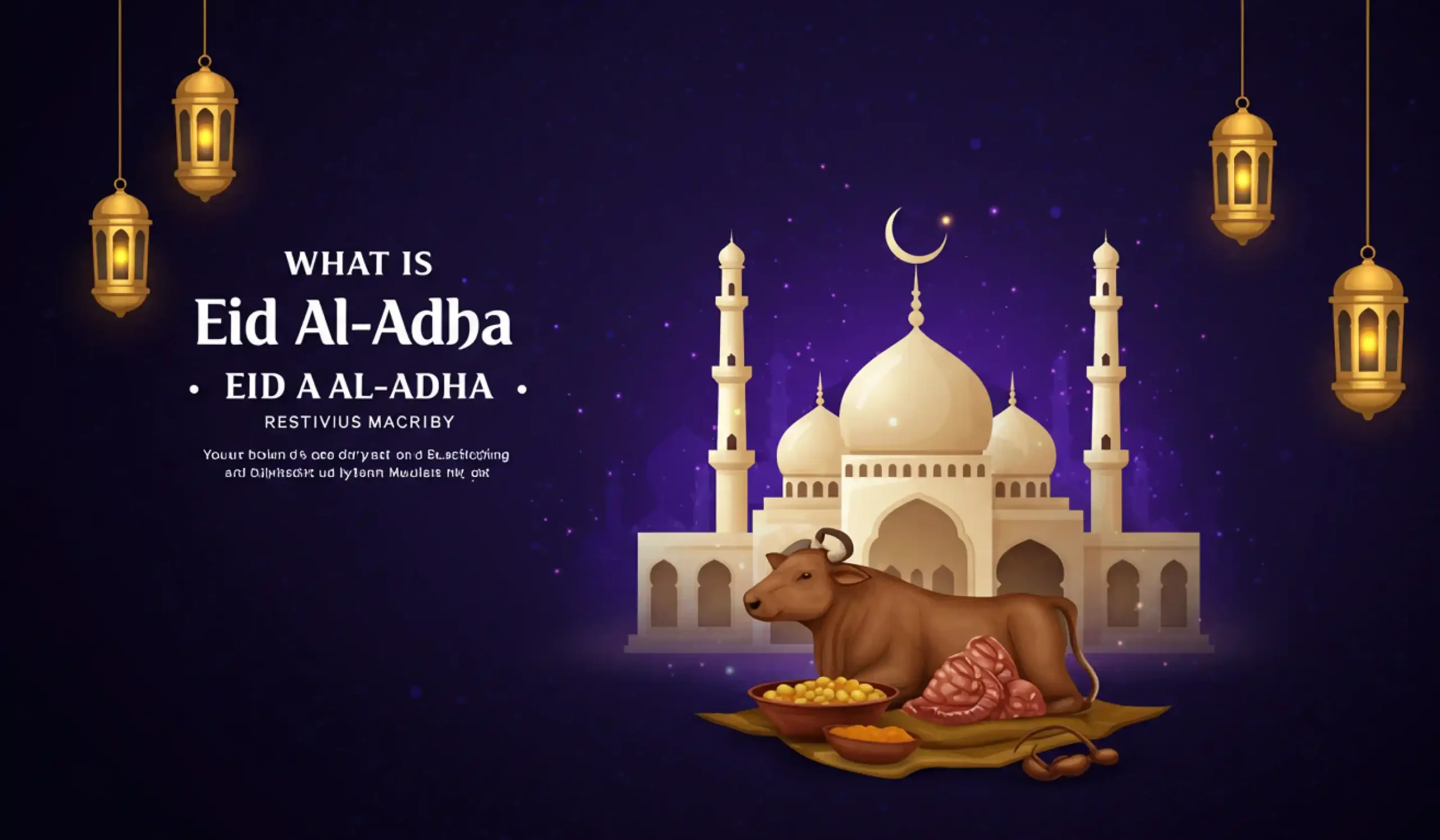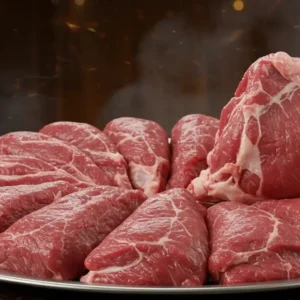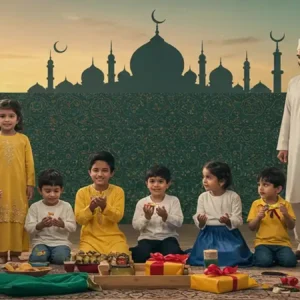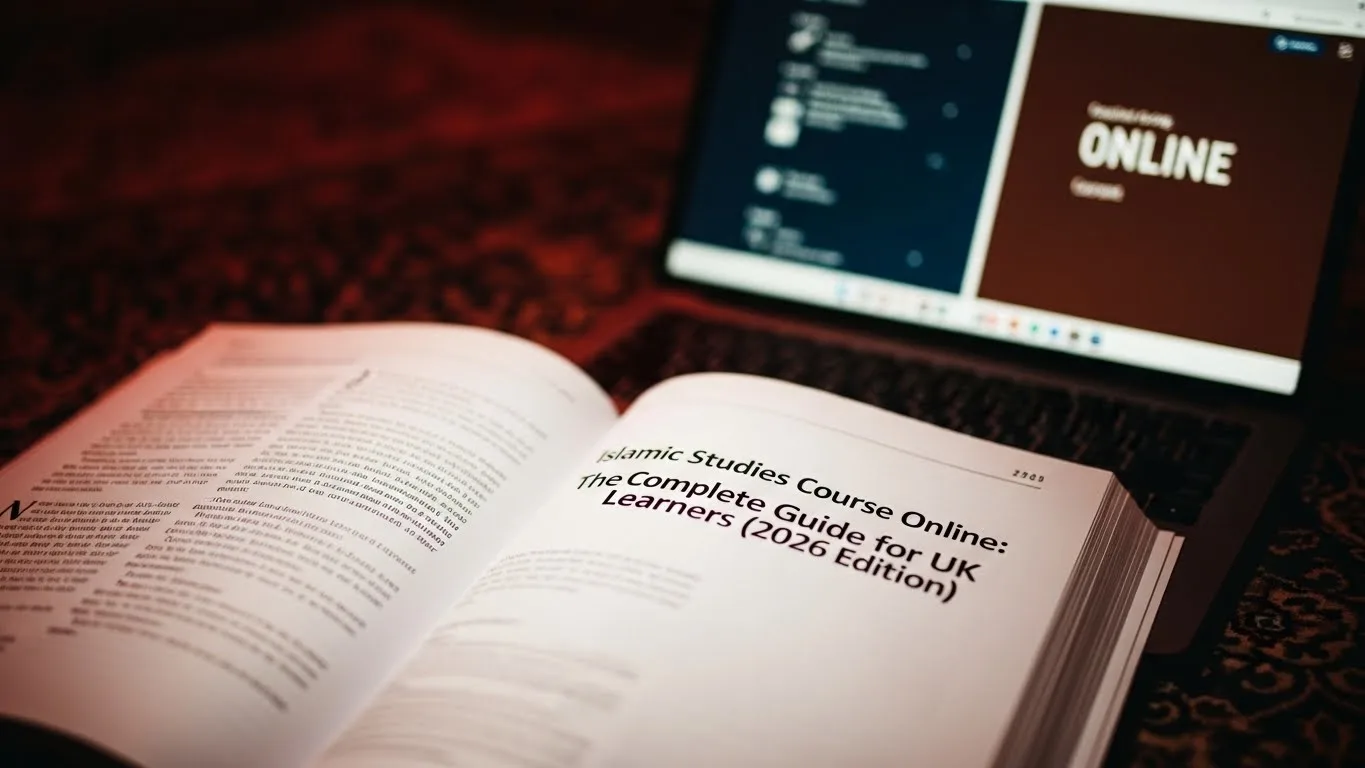Eid al-Adha is one of the most important Islamic holidays celebrated by Muslims around the world.
In this article, you’ll discover everything you need to know about its meaning, rituals, and cultural significance.
What Is Eid al-Adha?
Eid al-Adha is one of the two major Islamic festivals, celebrated by Muslims worldwide. It is known as the “Festival of Sacrifice” and reflects deep values of devotion, obedience, and sharing.
- It is celebrated on the 10th day of the Islamic month Dhul Hijjah.
- Muslims gather to perform special prayers in mosques or open areas.
- The celebration involves sacrificing animals and distributing the meat.
- Eid al-Adha teaches the importance of generosity and compassion.
- It is a day of unity, reflection, and joy for the Muslim community.
The Story Behind Eid al-Adha
The story of Eid al-Adha comes from the great act of Prophet Ibrahim (Abraham). He showed his strong faith in God by being ready to sacrifice his son.
- Ibrahim had a dream where he was commanded by God to sacrifice his beloved son.
- He submitted to God’s will and prepared to follow the command.
- At the last moment, God replaced the son with a ram as a test of faith.
- This event became the basis for the tradition of sacrifice during Eid al-Adha.
- The story symbolizes ultimate devotion, trust, and spiritual strength.
Why Do Muslims Celebrate Eid al-Adha?
Eid al-Adha is a holiday that honors Prophet Ibrahim’s obedience. It reminds us of faith, sacrifice, and helping our community.
- It honors the willingness to surrender to God’s command.
- It reminds Muslims of their duty to help others and be grateful.
- Through sacrifice, Muslims renew their spiritual connection with God.
- It encourages reflection on the blessings of life and the needs of the less fortunate.
- Eid al-Adha unites Muslims across the world in one shared purpose.
When Is Eid al-Adha Celebrated Each Year?
The date of Eid al-Adha changes each year, based on the Islamic lunar calendar. It always falls on the 10th day of Dhul Hijjah, the final month of the Islamic year.
- The festival comes at the end of the Hajj pilgrimage in Mecca.
- It usually lasts for 3–4 days depending on local traditions.
- The timing varies from year to year in the Gregorian calendar.
- Countries may have official holidays for the celebration.
- Muslims prepare in advance to make the most of Eid al-Adha.
How Is Eid al-Adha Different from Eid al-Fitr?
Though both are major Islamic holidays, Eid al-Adha and Eid al-Fitr have different meanings, timing, and traditions.
- Eid al-Adha follows the Hajj and centers on sacrifice.
- Eid al-Fitr comes after Ramadan and focuses on breaking the fast.
- Eid al-Adha involves animal sacrifice and meat distribution.
- Eid al-Fitr focuses more on charity and community meals.
- Both emphasize prayer, gratitude, and family, but Eid al-Adha highlights faith through sacrifice.
The Meaning of Sacrifice in Eid al-Adha
Sacrifice during Eid al-Adha is more than just killing an animal. It shows devotion, generosity, and spiritual reflection.
- Muslims sacrifice a sheep, cow, or camel if they are financially able.
- The meat is divided into three parts: for the poor, for family, and for friends.
- It represents a willingness to give up something valuable for God’s sake.
- The act teaches humility and empathy for those in need.
- Eid al-Adha encourages sharing blessings and supporting others in the community.
Who Should Perform the Eid al-Adha Sacrifice?
The act of sacrifice during Eid al-Adha is a recommended Sunnah for every financially able Muslim. It is a chance to draw closer to God through an act of devotion and charity.
- Every adult Muslim who can afford it should offer a sacrifice.
- It’s not obligatory but highly encouraged and rewarded.
- One sacrifice is enough for the whole household.
- It must be done after the Eid al-Adha prayer.
- Those who cannot afford it are not required to perform the sacrifice.
What Kind of Animals Are Sacrificed on Eid al-Adha?
The sacrifice on Eid al-Adha must meet specific religious guidelines. The animal should be healthy, of the right age, and suitable for sacrifice.
- Acceptable animals include sheep, goats, cows, and camels.
- Sheep and goats count as one sacrifice per person.
- Cows and camels can be shared by up to seven people.
- The animal must be free from defects or sickness.
- The act of slaughter is done in the name of Allah during Eid al-Adha.
How the Eid al-Adha Meat Is Distributed
One of the most beautiful parts of Eid al-Adha is sharing meat. This shows generosity, equality, and care for others in the community.
- The meat should be divided into three equal parts:
- One-third for the family
- One-third for relatives and friends
- One-third for the poor and needy
- Sharing the meat helps strengthen social bonds.
- It ensures that everyone enjoys the blessings of Eid al-Adha.
- Even those who can’t offer a sacrifice are included in the joy.
Eid al-Adha and the Hajj Pilgrimage Connection
Eid al-Adha is closely linked to the sacred pilgrimage of Hajj, which is one of the five pillars of Islam. The festival occurs during the last days of the pilgrimage in Mecca.
- It is celebrated on the 10th day of Dhul Hijjah, the day after pilgrims stand on Mount Arafat.
- The sacrifice echoes Prophet Ibrahim’s story, which is part of Hajj rituals.
- Pilgrims perform their own sacrifice as part of the rites of Hajj.
- Muslims around the world who are not on Hajj also celebrate Eid al-Adha.
- The festival is a reminder of unity and submission to God.
The Spiritual Lessons of Eid al-Adha
Eid al-Adha is more than just traditions and rituals. It carries strong spiritual messages. These messages inspire Muslims to think, improve, and grow in their faith.
- It teaches obedience to God’s commands, just as Prophet Ibrahim showed.
- It encourages selflessness, humility, and sacrifice for a greater cause.
- The act of giving reminds us to care for the poor and support each other.
- It strengthens the bond between worshippers and their Creator.
- Eid al-Adha is a time to renew one’s purpose and spiritual goals.
Eid al-Adha Around the World: How Cultures Celebrate
The core meaning of Eid al-Adha is the same around the world. However, different cultures celebrate it in their own special ways, mixing tradition with faith.
- In Turkey, it’s called “Kurban Bayramı” and families gather for large meals.
- In Indonesia, people gather at mosques and community centers for the sacrifice.
- In Africa, traditional music and clothing play a big role in Eid al-Adha.
- In Western countries, Muslims often celebrate with multicultural events.
- Despite cultural differences, the message of faith, sacrifice, and charity unites all Muslims during Eid al-Adha.
Eid al-Adha for Non-Muslims: What You Need to Know
For non-Muslims, Eid al-Adha is a great chance to learn about Islamic traditions and values. It highlights cultural practices based on faith and generosity.
- Eid al-Adha is not just a religious event; it’s a celebration of sacrifice and compassion.
- Non-Muslims are often invited to join meals or community events during the holiday.
- Understanding the significance of the sacrifice helps build cultural respect and awareness.
- It’s a chance to witness how Muslims emphasize kindness and charity.
- Non-Muslims can greet their Muslim friends with simple wishes like “Happy Eid al-Adha!”
Eid al-Adha Greetings and Common Phrases
Eid al-Adha, like other big celebrations, has special greetings. These are used to share joy and blessings with others.
- The most common greeting is “Eid Mubarak”, meaning “Blessed Eid.”
- You can say “Eid al-Adha Mubarak” to be more specific.
- Other phrases include “Kul ‘am wa antum bikhayr” (May you be well every year).
- Many Muslims also add personal prayers and good wishes.
- Greeting someone warmly during Eid al-Adha spreads love and positivity.
How to Say “Happy Eid al-Adha” in Arabic
If you want to say “Happy Eid al-Adha” in Arabic, here is an easy and meaningful way. This will help you connect with the spirit of the occasion.
- The most direct phrase is “عيد أضحى مبارك” (Eid Adha Mubarak).
- You can also say “كل عام وأنتم بخير” (Kul ‘am wa antum bikhayr).
- These greetings are used in many Arab and Muslim-majority countries.
- A smile and genuine intent matter more than perfect pronunciation.
- Learning to say it shows respect and appreciation for the meaning of Eid al-Adha.
Eid al-Adha Activities for Families and Children
Eid al-Adha Activities for Families and ChildrenEid al-Adha is not just for adults. It is a fun and educational time for children and families. They can come together, learn, and celebrate.
- Families often begin the day with prayer and festive clothing.
- Children are taught about the story of Ibrahim in simple ways.
- Fun activities include decorating the home and exchanging small gifts.
- Some communities organize events like storytelling, games, and crafts.
- These moments help children connect with the deeper meaning of Eid al-Adha.
Preparing for Eid al-Adha: Spiritual and Practical Tips
Getting ready for Eid al-Adha requires both spiritual preparation and practical planning. This makes the day more meaningful and organized.
- Begin with reflection, prayer, and good intentions.
- Save money in advance for the sacrifice if you’re eligible.
- Clean and decorate the home to welcome the festive spirit.
- Plan meals and gatherings, keeping the needs of the poor in mind.
- Preparing ahead allows you to fully enjoy the blessings of Eid al-Adha.
The Importance of Charity During Eid al-Adha
Charity is central to Eid al-Adha. It is more than just a celebration; it reminds us of our duty to help others.
- A portion of the sacrificed meat is given to the poor and needy.
- Muslims are encouraged to donate extra food, clothes, or money.
- Giving zakat (charitable giving) is often emphasized during this time.
- Many organizations collect donations specifically for Eid al-Adha aid.
- Through charity, Eid al-Adha becomes a source of joy for the whole community.
How to Celebrate Eid al-Adha If You Live Abroad
Living far from your home country doesn’t mean you can’t enjoy the spirit of Eid al-Adha. With intention and creativity, the holiday can still be meaningful and joyful.
- Start your day with the special Eid al-Adha prayer at a local mosque.
- Connect with the Muslim community in your area for celebrations or meals.
- If you’re alone, organize a virtual call with family or friends.
- Prepare traditional food at home to feel connected to your roots.
- Share the values of Eid al-Adha with neighbors or coworkers to promote understanding.
Eid al-Adha Traditions in Muslim Countries
The heart of Eid al-Adha is the same, but traditions differ in each Muslim country. Each country adds its own cultural beauty to the celebration.
- In Egypt, families gather for morning prayer then enjoy large meals.
- In Pakistan, people prepare for weeks and wear colorful traditional clothes.
- Indonesians often gather at mosques for communal sacrifice events.
- In Saudi Arabia, the celebration is deeply connected to the Hajj pilgrimage.
- Despite the cultural differences, the values of Eid al-Adha—sacrifice, charity, and faith—remain universal.
Do All Muslims Celebrate Eid al-Adha the Same Way?
Eid al-Adha has the same foundation in all Islamic traditions. However, the way people celebrate it can vary. This can depend on culture, region, and personal situations.
- Sunni and Shia Muslims both celebrate Eid al-Adha, with slight differences in timing or rituals.
- In some areas, the sacrifice is done at home; in others, it’s done through charities.
- The length of the holiday may vary—some countries celebrate for 3 days, others for 4.
- Personal or economic situations can affect how people observe the holiday.
- Unity in purpose, not uniformity in practice, defines Eid al-Adha.
Teaching Kids About Eid al-Adha: Easy Ideas
Eid al-Adha is a great time to teach kids about faith, kindness, and cultural identity in fun ways.
- Tell the story of Prophet Ibrahim using simple language or illustrated books.
- Use crafts or drawing activities to represent the Kaaba or sacrificial animals.
- Encourage kids to help in preparing meals or distributing food to the needy.
- Play educational games or show videos about Eid al-Adha.
- Create memory-making moments that link fun with faith and learning.
Celebrating Eid al-Adha During Difficult Times
Even during tough times, the spirit of Eid al-Adha can bring hope and support to people and families.
- Focus on the inner meaning of the holiday—faith, patience, and trust in God.
- If finances are tight, skip the sacrifice and give whatever you can in charity.
- Pray, reflect, and connect with others emotionally—even from a distance.
- Simplify the celebration while still honoring the purpose of Eid al-Adha.
- Difficult times often reveal the true power of faith and community.
Eid al-Adha Food: Popular Dishes Across Cultures
Food is a big part of Eid al-Adha. Every culture has its own tasty way to celebrate with traditional meals.
- In Morocco, people enjoy dishes like Mechoui (roasted lamb) and couscous.
- In India and Pakistan, families prepare biryani, kebabs, and rich curries.
- Middle Eastern countries serve maqluba, stuffed grape leaves, and lamb stews.
- In Indonesia, satay and coconut-based dishes are popular during Eid al-Adha.
- Across all cultures, food becomes a symbol of togetherness and gratitude.
How to Dress for Eid al-Adha
Eid al-Adha is a time of celebration, and dressing well is part of honoring the occasion. Muslims are encouraged to appear clean, neat, and in their best clothes for the day.
- Choose modest and comfortable outfits that reflect your culture.
- For men, wearing traditional garments like thobe or kurta is common.
- Women often wear colorful dresses or abayas with elegant accessories.
- Children can enjoy wearing festive clothes that make them feel special.
- Dressing nicely shows respect for the spirit of Eid al-Adha and the prayer gathering.
Visiting the Mosque on Eid al-Adha Morning
One of the highlights of Eid al-Adha is the special morning prayer. Muslims gather in mosques or open areas to offer thanks and begin the day with unity and worship.
- Wake up early, take a shower (ghusl), and wear your best clothes.
- Attend the Eid al-Adha prayer after sunrise, usually held in large congregations.
- The prayer is followed by a short sermon (khutbah) reminding everyone of the occasion’s meaning.
- Greet fellow Muslims after prayer with “Eid Mubarak.”
- This act brings a sense of community and spiritual renewal during Eid al-Adha.
Sending Eid al-Adha Cards and Gifts
Sharing cards and gifts during Eid al-Adha helps strengthen relationships. It also brings happiness to loved ones, even when you are far apart.
- Send handwritten or digital Eid al-Adha cards with warm messages.
- Small gifts like sweets, books, or clothes are thoughtful and appreciated.
- Give gifts to children to make them feel the joy of the holiday.
- Acts of kindness, even if simple, reflect the values of the occasion.
- Sharing during Eid al-Adha spreads love and reinforces family bonds.
Environmental Awareness During Eid al-Adha Sacrifice
Sacrifice is a key part of Eid al-Adha. It is also important to think about the environment and health standards during this time.
- Ensure the animal is healthy and treated humanely before the sacrifice.
- Perform the sacrifice in hygienic, licensed facilities if possible.
- Dispose of waste properly to avoid environmental harm.
- Minimize plastic or unnecessary packaging when distributing meat.
- Practicing sustainability shows respect for creation and for the ethics of Eid al-Adha.
Eid al-Adha Etiquette and Manners
Eid al-Adha is a time for joy. It is also a time for good manners, kindness, and caring behavior in the community and family.
- Start the day with gratitude and a positive attitude.
- Greet everyone with a smile and say “Eid Mubarak.”
- Visit family, neighbors, and the elderly if possible.
- Speak kindly, avoid arguments, and forgive old conflicts.
- Show respect and appreciation for everyone’s role in the celebration of Eid al-Adha.
Reflecting on Faith and Gratitude During Eid al-Adha
Above all, Eid al-Adha is a time to pause and reflect on the deeper meaning of faith, sacrifice, and gratitude to God.
- Think about the story of Prophet Ibrahim and the lessons it teaches.
- Be thankful for health, family, and the blessings in your life.
- Renew your connection with God through prayer and acts of kindness.
- Share what you have with others, especially those in need.
- This reflection transforms Eid al-Adha from a tradition into a powerful moment of spiritual growth.
FAQ
1. What does Eid al-Adha mean in English?
It means “Festival of Sacrifice,” commemorating Prophet Ibrahim’s obedience to God.
2. Do I have to sacrifice an animal to celebrate Eid al-Adha?
Only Muslims who can afford it are encouraged to offer a sacrifice; it’s not obligatory for everyone.
3. How long does Eid al-Adha last?
The celebration usually lasts 3 to 4 days depending on the country.
4. Can non-Muslims join Eid al-Adha celebrations?
Yes! Many Muslims welcome non-Muslim friends to join in meals or cultural events.
5. What is the difference between Eid al-Adha and Eid al-Fitr?
Eid al-Adha is related to the Hajj and sacrifice, while Eid al-Fitr comes after Ramadan and celebrates the end of fasting.
Join quranic mind Today!
🎉 Special Eid al-Adha Offer!
To celebrate Eid al-Adha, Quranic Academy is offering you 2 free trial sessions. You can choose any course, including Quran Memorization, Tajweed, Arabic Language, or Islamic Studies.
📩 Register now and claim your free sessions before the offer ends!
Eid al-Adha is more than a holiday — it’s a celebration of faith, sacrifice, and community. Knowing its values helps us connect with the core of Islam. This brings us closer together in compassion and unity. May your Eid be filled with peace, joy, and blessings.






